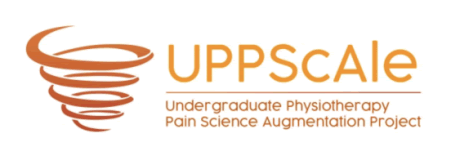




Lecture 1
Lecture time: 21:15 minutes
This lecture presents the theoretical constructs of pain with brain changes (the organization of the primary somatosensory cortex and the primary motor cortex). It also applies these changes in a case of a person with (persistent) pain. Measurement tools and interventions are suggested to assess and target pain and these changes.
Lecture 2
Lecture time: 17:21 minutes
This lecture presents international classification of functioning and disability (ICF) as a clinical reasoning model. It also covers Nagi’s model of disability (1965) and the disablement model (Verbrugge and Jette model of 1994).
Lecture 3
Lecture time: 25:52 minutes
This lecture presents a previously covered case-study to show the measurement in physiotherapy clinical care.
Lecture 4
Lecture time: 45:54 minutes
This lecture presents the biopsychosocial clinical reasoning process that occurs during an encounter with a patient. It includes how the therapist integrates thinking and decision making to individualise treatment for each patient. This also considers the factors that influence the patients’ ability to adapt and use their own self-management skills.
Lecture 5(i)
Lecture time: 7:14 minutes
This lecture presents how chronic musculoskeletal pain is on the rise and some of the issues associated with this. It also shows the results from a longitudinal observational study which used phenotype analysis to show a novel approach towards musculoskeletal phenotypes.
Lecture 5(ii)
Lecture time: 10:27 minutes
This lecture presents why it’s important to engage students in clinical reasoning, and how this can be used in clinical reasoning.
Lecture 6
Development of cases and the use of case based learning (PDF)
Lecture time: 13:26 minutes
This lecture presents the steps on how to develop cases and the use of case based learning with students.